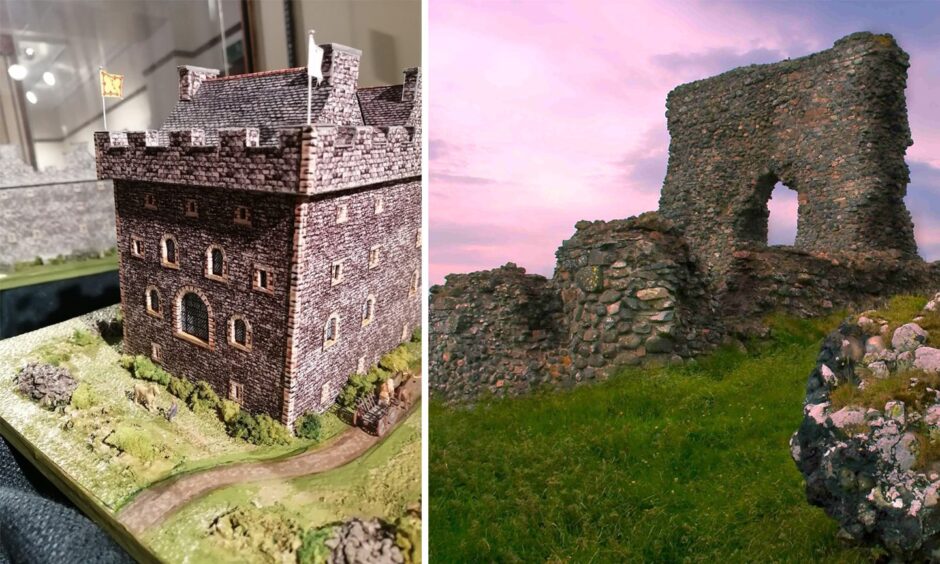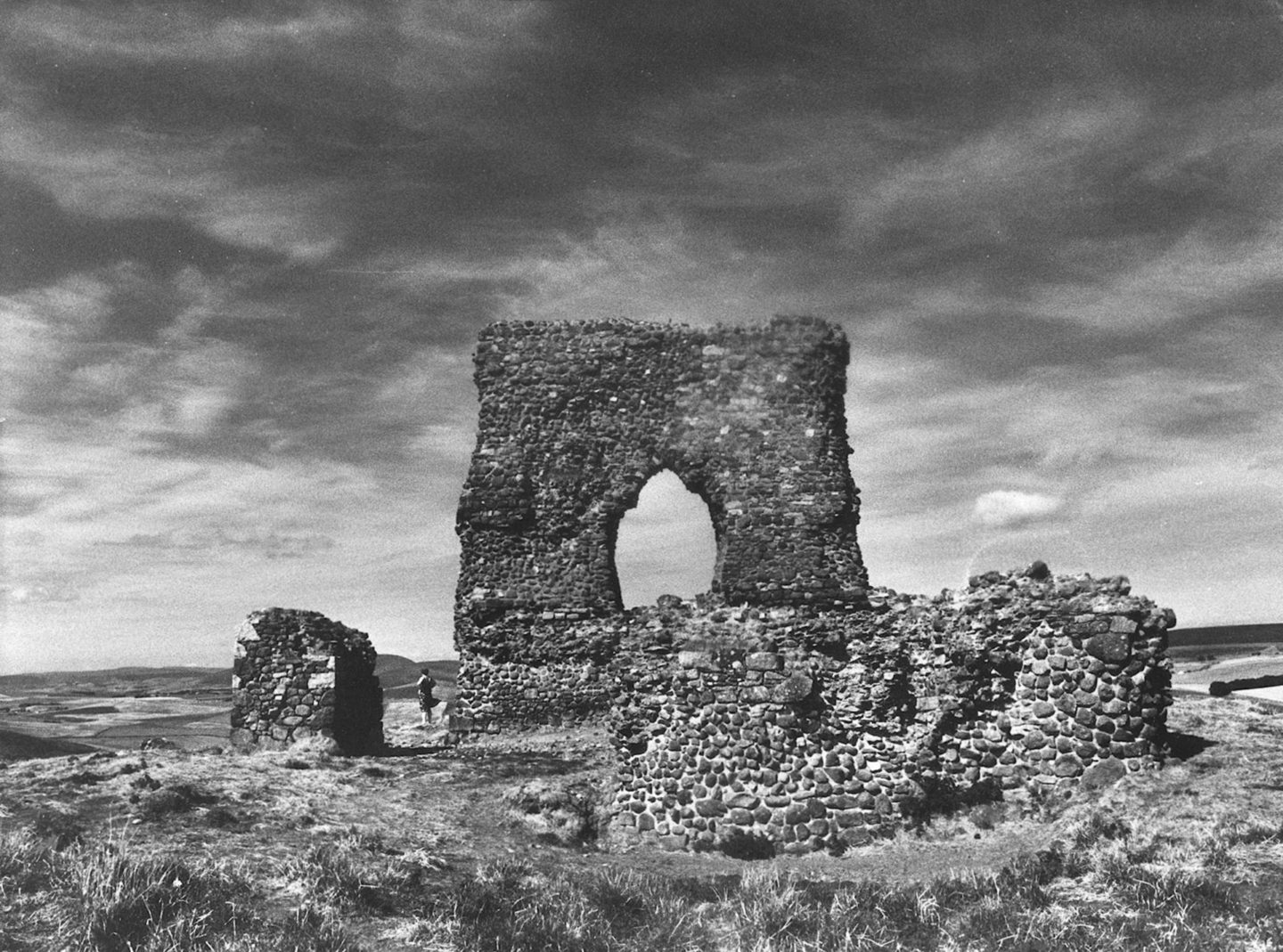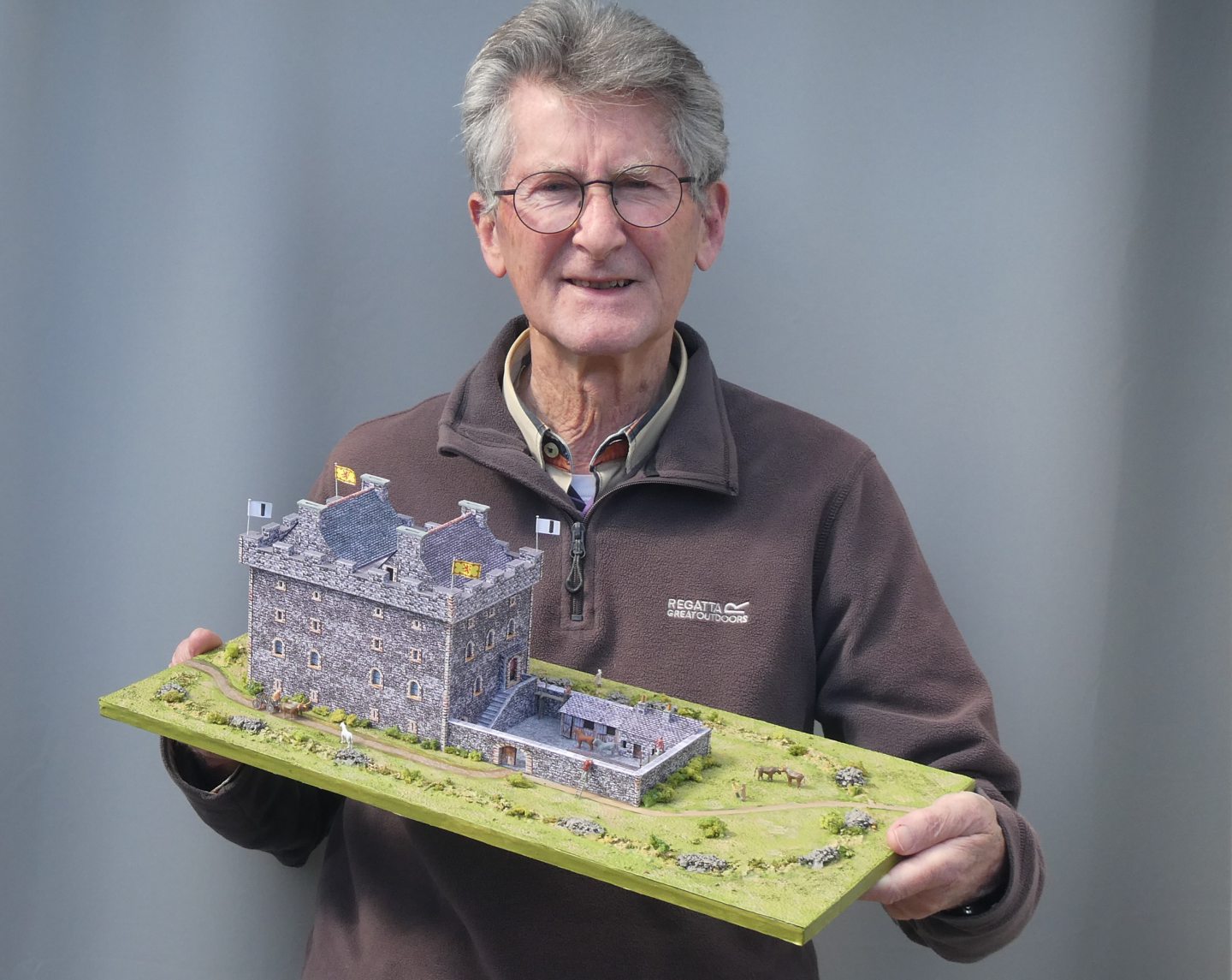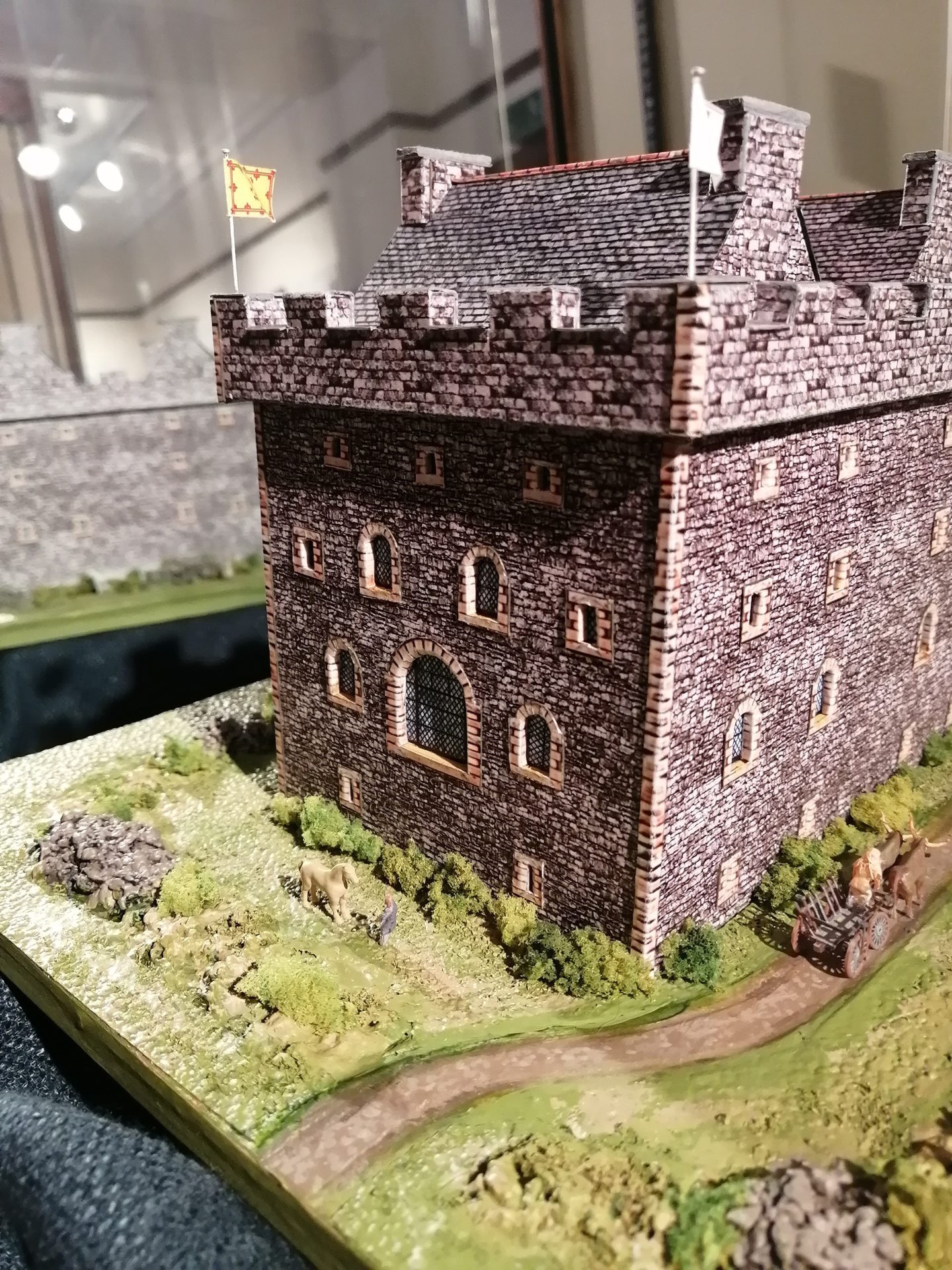
For hundreds of years, a dramatic hilltop ruin overlooking Insch is all that has remained of Dunnideer Castle.
But now, people can see how the ancient fortification would have looked – thanks to a founding member of Pink Floyd.
Musician and renowned artist Clive Metcalfe has painstakingly recreated Dunnideer Castle in scale form.
The model forms the centrepiece of Insch Connection Museum’s 2024 exhibition – The Castle of Dunnydure – which celebrates the prominent ruin.
Dunnideer is a monument of national importance
Dunnideer Castle is thought to have been the earliest tower house on mainland Scotland dating to the Middle Ages.
Scottish tower houses were generally compact castles in strategic locations built as homes as well as for defence.
Dunnideer was partly constructed circa 1260 from the remains of a previous Iron Age vitrified fort, meaning the stones were fused by heat.
The tower house ruin stands within the remaining ramparts of the fort on top of a hill west of Insch.
A scheduled ancient monument, the castle was home to Sir John de Balliol, who was John King of Scots between 1292 and 1296.
As part of its classification as a monument of national importance, Historic Scotland says it “has the potential to provide important information about defence, settlement and social structure in both the prehistoric and medieval periods in this area”.
Castle continues to captivate visitors
Dr Colin Harris, a trustee of the Insch Connection Museum, has meticulously researched the castle for many years to discover what the castle looked like in its heyday.
His work and wealth of knowledge has been the basis for the museum’s ‘The Castle of Dunnydure’ exhibition.
Dunnydure is the ancient name thought to have links to Mary Queen of Scots, but most people know the ruin as Dunnideer or Dunnydeer.
Such is the enduring interest in the castle, the museum trustees have taken the unusual decision to continue the exhibition for a second year running.
Normally the museum changes its main exhibit each season, but Dunnideer has proved a popular topic.
A record number of visitors were welcomed last year, with many coming from all over the world.
Given Dunnideer Castle continues to captivate people – and is often painted and photographed – it is apt that the museum team commissioned an artist to bring the castle to life.
Founding member of Pink Floyd has brought castle to life
The idea to turn Dr Harris’ research into a 3D visualisation of the ancient castle led the Insch Connection Museum to commission Kent-based model maker, Clive Metcalfe, to build a scale model.
Not only is Clive a renowned artist, he was a founding member of legendary rock band, Pink Floyd.
It was while studying at the Chelsea School of Art in London around 1962 that Clive was a founding member of Sigma 6, which became Pink Floyd.
He played guitar alongside bassist Roger Waters and drummer Nick Mason, before leaving the band a year later.
As well as having success with singing and songwriting, Clive pursued a career in art, and spent 15 years as a designer goldsmith and heading up university degree courses.
His experience of working intricately with jewellery means he was well-placed to build a 1:150 scale model of Dunnideer Castle as it might have looked in the 16th Century.
Model reveals how Dunnideer looked in 16th Century
The model captures the close-packed masonry of the ruin, while a number of tiny windows show how the ruined window arch visible today would have looked in the wider context of the building.
It is the first time a complete model of the ancient castle has been built and forms the centrepiece of the exhibition.
Henrike Bird, curator and chairwoman at the Insch Connection Museum, said she is delighted with the response so far to the latest exhibition, particularly the model which has “really captured the imagination of visitors”.
She added: “As a museum professional, it’s extremely rewarding to receive such positive feedback and be able to share local heritage with a wide range of people and different generations.
“Our small team of volunteers has done an incredible job and, of course, special credit to both Colin and Clive for their painstaking efforts in bringing Dunnydure Castle to life.
“The exhibition is the busiest we have ever experienced with a record number of visitors to the museum, including people who have travelled from across the UK and as far afield as the United States, Canada, Germany, and Spain.”
Exhibition based in historic former ticket office at Insch Station
Henrike came to Insch after 11 years as a scientist and spokeswoman at the prestigious Archaeological Museum of Hamburg, Germany.
Although the 2024 season is only just under way, Henrike is already turning her attention to next year.
She is hoping to celebrate important local artefacts which would otherwise not be readily accessible to the public.
Henrike dedicates her time and expertise to guiding visitors in the intimate setting of the historic museum in Insch.
The museum building is the former ticket office at Insch Railway Station, and was nearly demolished by ScotRail in 1996.
It was saved by Aberdeenshire Council on the basis it would house a heritage centre – now the Insch Connection Museum.
Where and when to see exhibition
The Castle of Dunnydure at the Insch Connection Museum is open every Sunday afternoon, between 2-4pm, from April-October.
Admission is free with donations welcomed, and the museum is also accessible to wheelchair users. It can be opened for larger groups and private bookings by contacting Henrike.
Dr Harris is giving a talk at 7pm on Monday April 29 at St Drostan’s in Insch, about the model.
He will explore the development of the castle, its function in the 1500s, and the subsequent destruction and decline which led to the ruin we see today.
If you enjoyed this, you might like:











Conversation